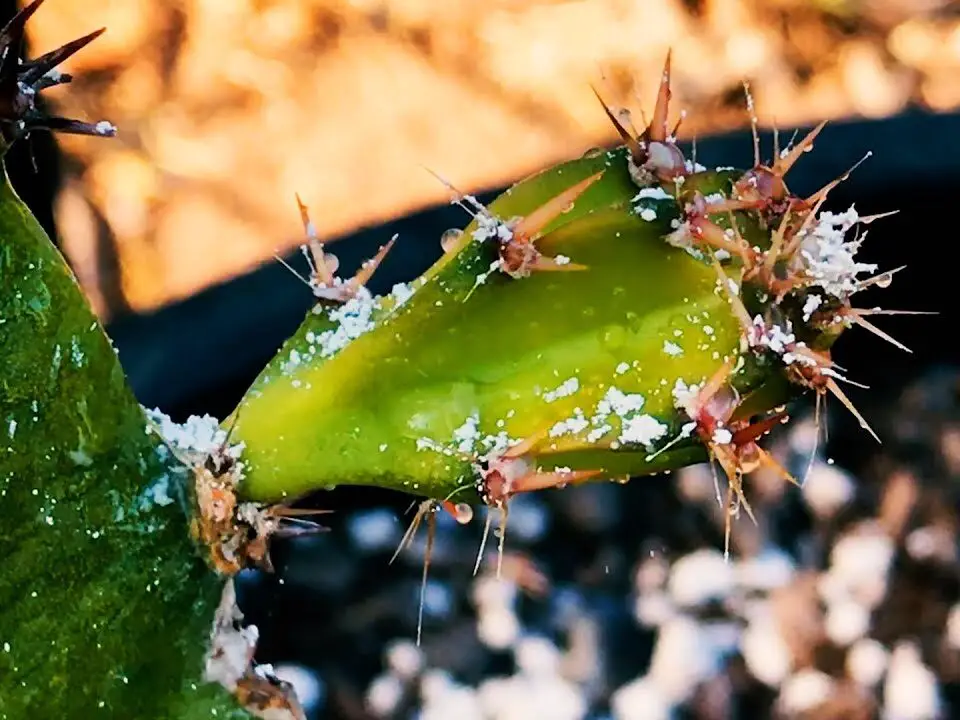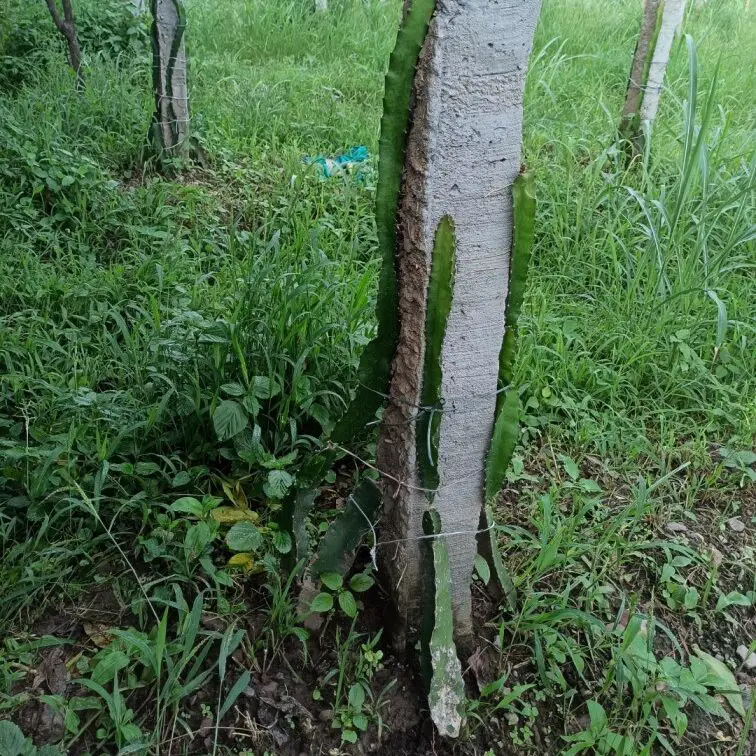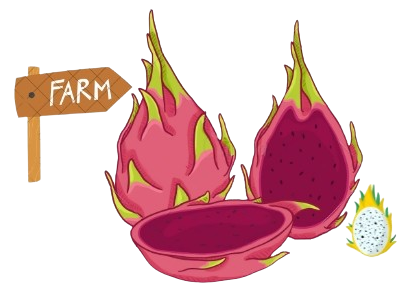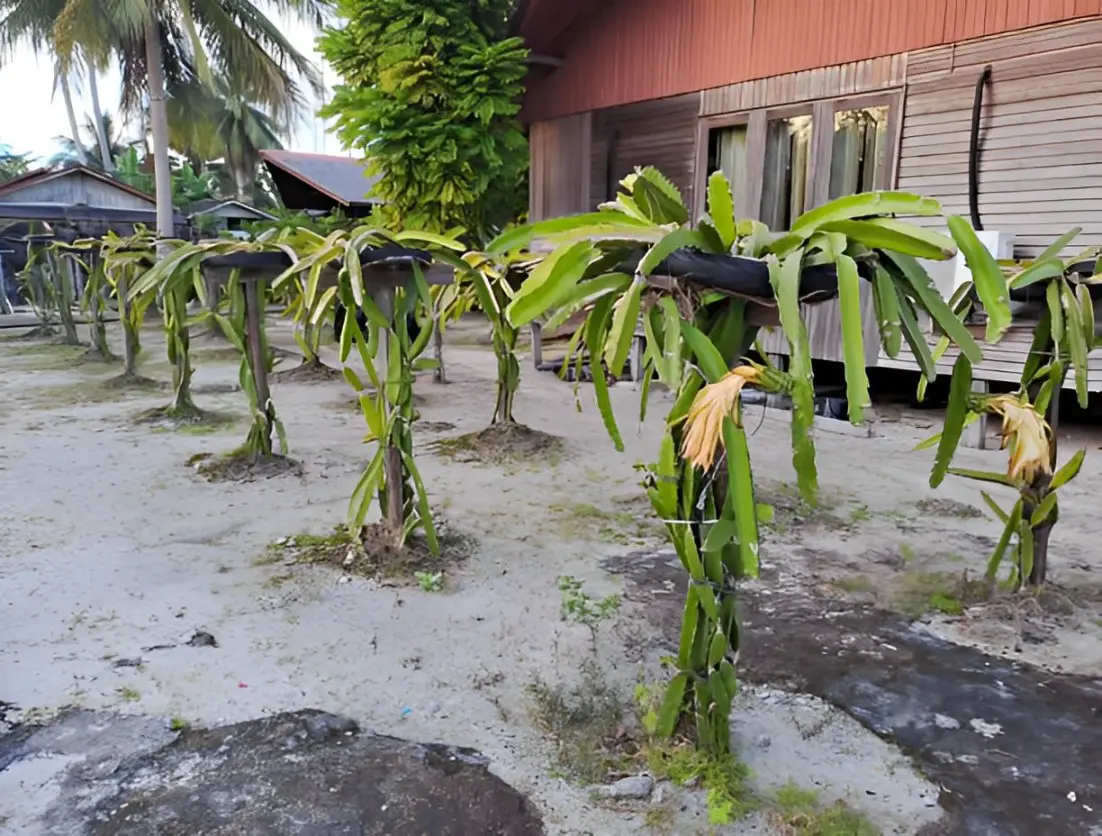Dragon fruit farming is a lucrative venture, but it requires careful attention to the health and well-being of the plants. Dragon fruit plants are sensitive and require constant care to thrive. Often, farmers unknowingly make mistakes that stress the plants, leading to reduced yields and overall plant health deterioration. In this article, we will discuss the top 5 mistakes that cause stress in dragon fruit plants and Dragon Fruit Farming Stress Control. By understanding these mistakes, new farmers can ensure their plants grow healthy and produce high-quality fruits.
1. Lack of Balanced Fertilization

Why Balanced Fertilization is Important
For healthy growth and high-quality fruits, dragon fruit plants require a balanced supply of nutrients. If the soil is deficient in essential nutrients like nitrogen, phosphorus, potassium, and micro-nutrients, the plants become weak and stressed. As a result, growth is stunted, the plant becomes more vulnerable to diseases dragon fruit plant stress, and fruit production may decrease.
Symptoms of Nutrient Deficiency
- Yellowing of Leaves: Dragon fruit plants are heavy feeders and require abundant nutrients. If there is a lack of nutrients, the leaves turn yellow, indicating a deficiency Dragon Fruit Farming Stress Control.
- Reduced Growth: The plants will stop growing if they do not receive adequate food and essential nutrients.
- Poor Fruiting: When there is a lack of proper nutrition, the plant may drop flowers or the fruits produced may be undersized or poor quality, leading to financial loss.
Solution
- Soil Testing: Conduct regular soil testing to understand the nutrient content. Based on the results, add the necessary fertilizers.
- Organic Fertilizers: Use organic compost, which is beneficial for the health of the plants.
- Nutrient Supplementation: Apply a basal dose of calcium and other vital nutrients as required by the plants.
- Mulching: Regular mulching helps maintain moisture and adds organic matter to the soil, improving fertility.
2. Inadequate Moisture Supply

The Importance of Moisture for Dragon Fruit
Dragon fruit plants require adequate moisture to thrive, especially in dry conditions. The plants need a consistent moisture level in the soil for proper growth. Lack of moisture, particularly during the summer months, can severely stress the plants which need Dragon Fruit Farming Stress Control.
Symptoms of Water Stress
- Pale Pink Leaves: The leaves begin to turn a pale pinkish hue when the dragon fruit plant stress due to insufficient moisture.
- Wrinkled and Dry Fruit: Lack of water causes the fruit pulp to dry up, and the fruits may develop wrinkles, affecting their quality.
how to take care of dragon fruit plant
- Regular Watering: Water the plants regularly but avoid over-watering. Ensure that the soil remains moist but not waterlogged.
- Drip Irrigation: Install a drip irrigation system to ensure a consistent moisture level around the roots.
- Mulching: Apply mulch around the plants to retain moisture and prevent the soil from drying out too quickly.
3. Excessive Sun Exposure and Sunburn

How Excessive Sun Can Harm Dragon Fruit
While dragon plant require sunlight to grow, excessive direct exposure to hot sun can lead to sunburn. Sunburn can cause stress to the plants, leading to reduced growth and increased vulnerability to fungal infections which require Dragon Fruit Farming Stress Control.
Symptoms of Sunburn
- Yellowing of Leaves: When the plant experiences sunburn, the leaves begin to turn yellow and may dry out.
- Stunted Growth: The new buds may get scorched, preventing the plant from growing further.
Solution
- Shade Nets: Use 50% shade nets around the plants to protect them from extreme heat.
- Green Miracle Products: Consider using products like Green Miracle to reduce stress caused by sunlight.
- Watering During Cool Hours: Water the plants during early morning or late evening to avoid watering them during the hottest part of the day.
- Grass Mulching: Place grass around the plants to help regulate the temperature around the roots.
4. Ignoring Pests and Fungal Infections

Why Pest and Fungal Control is Crucial
Dragon fruit plants are prone to pest attacks and fungal infections, which can weaken the plants, leading to stress and affecting fruit production. Pests and fungi can easily spread, causing further damage if left untreated.
Symptoms of Pest and Fungal Attacks
- Insect Infestation: Pests such as aphids and mealybugs can be spotted on the plants, sucking out nutrients and causing the plant to weaken.
- Fungal Growth: Brown spots, rot, or rust on the plant can be signs of fungal infections.
Solution
- Regular Inspection: Check the plants regularly for any signs of pests or fungal infections.
- Organic Pesticides: Use organic insecticides to control pests and protect plant health.
- Neem Oil: Neem oil is an effective and natural solution to combat fungal infections.
- Trichoderma Pseudomonas: Applying this bio-fungicide helps control fungal diseases effectively.
5. Overgrown Weeds Around the Plants

How Weeds Affect Dragon Fruit
Weeds around dragon plant compete for nutrients and water. If left unchecked, weeds can deplete the soil’s nutrients, causing the plants to struggle for essential elements required for healthy growth.
Symptoms of Weed Stress
- Nutrient Deficiency: Weeds consume a large portion of the available nutrients, leading to poor growth of the dragon fruit plants.
- Increased Pest and Fungal Attacks: Overgrown weeds create a favorable environment for pests and fungal infections, which can further need Dragon Fruit Farming Stress Control.
Solution
- Regular Weeding: Weed the area regularly to ensure that the plants receive the nutrients they need.
- Mulching: Use mulch to suppress weed growth and maintain moisture in the soil.
- Proper Ventilation: Ensure proper airflow around the plants to reduce the risk of fungal growth because of dragon fruit plant stress.
Tip of the Day: Understanding Your Dragon Fruit Plants
As a new farmer, one of the most important things you can do is spend time dragon fruits Farming Stress Control the needs of your dragon fruit plants. Each plant has its own set of requirements when it comes to water, sunlight, nutrients, and protection from pests. By closely monitoring your plants, you’ll be able to identify early signs of stress or deficiencies before they become a major issue.
Here are some ways to apply this tip effectively:
- Monitor the Leaves: Pay attention to any changes in the color, shape, or texture of the leaves. Yellowing, wilting, or spotting on the leaves are signs that something might be wrong, whether it’s a nutrient deficiency, water stress, or pest issues.
- Check the Soil: Regularly test the soil for moisture levels and nutrient content. This will help you decide if the soil is too dry or too wet and whether the plants are getting enough nutrition.
- Observe Growth Patterns: Healthy dragon fruit plants grow steadily, so any sudden slowdown in growth could indicate that the plant is under stress. If you notice that growth has slowed down or the plant isn’t producing fruits, it’s time to check for potential issues like pests, diseases, or nutrient deficiencies.
- Understand Seasonal Changes: The plant’s needs can vary with the seasons. During the hotter months, your plants may need more water and shade, while during cooler months, they might need less water but more protection from the cold.
- Act Promptly: The sooner you address any issues, the better chance you’ll have of resolving them. Whether it’s providing nutrients, adjusting watering habits, or treating for pests, early intervention is key.
By Dragon Fruit Farming Stress Control with your plants and getting familiar with their behavior, you will be in a much better position to provide them with exactly what they need. This attention to detail will help you avoid common mistakes and ensure your dragon fruit plants grow strong and healthy.
10 Frequently Asked Questions (FAQs)
1. How often should I water my dragon fruit plants?
Dragon fruit plants require regular watering. In summer, water them every 4-5 days, and in winter, water them once a week. Ensure that the soil is well-drained to avoid waterlogging.
2. What nutrients do dragon fruit plants need?
Dragon fruit plants require a balanced supply of nitrogen, phosphorus, potassium, calcium, and other essential micro-nutrients for healthy growth and fruit production.
3. How do I prevent fungal infections in my dragon fruit plants?
Regularly inspect your plants and apply organic fungicides such as neem oil or use bio-fungicides like Trichoderma pseudomonas. Maintain proper spacing and airflow around the plants to prevent fungal growth.
4. Should dragon fruit plants always be in direct sunlight?
Dragon fruit plants require sunlight but can suffer from sunburn if exposed to excessive direct sunlight. Use shade nets to protect them during the hottest part of the day.
5. How do I control weeds around dragon fruit plants?
Regular weeding, mulching, and ensuring proper soil aeration will help control weeds and prevent them from competing with the plants for nutrients.
6. What kind of fertilizer is best for dragon fruit plants?
Use organic compost and balanced chemical fertilizers, with special attention to nitrogen, phosphorus, potassium, and calcium. Always conduct a soil test before applying fertilizers.
7. How can I tell if my dragon fruit plants are stressed?
Look for signs like yellowing leaves, reduced growth, and poor fruit production. Wrinkled fruit and pale pink leaves are common signs of water or nutrient stress.
8. Can dragon fruit plants survive in hot climates?
Yes, but they need protection from extreme heat. Use shade nets to reduce the risk of sunburn and regulate temperatures around the plants.
9. Is it necessary to prune dragon fruit plants?
Pruning is essential to ensure proper growth and airflow. It helps to remove dead or damaged branches and encourages healthy fruiting.
10. What is the best time to harvest dragon fruit?
Dragon fruit is typically harvested when the skin turns bright pink or red, and the fruit feels slightly soft when pressed gently. Harvesting at the right time ensures the best taste and quality.
By understanding Dragon Fruit Farming Stress Control and common mistakes and addressing them effectively, you can ensure healthy dragon fruit plants that yield bountiful, high-quality fruits. Happy farming

